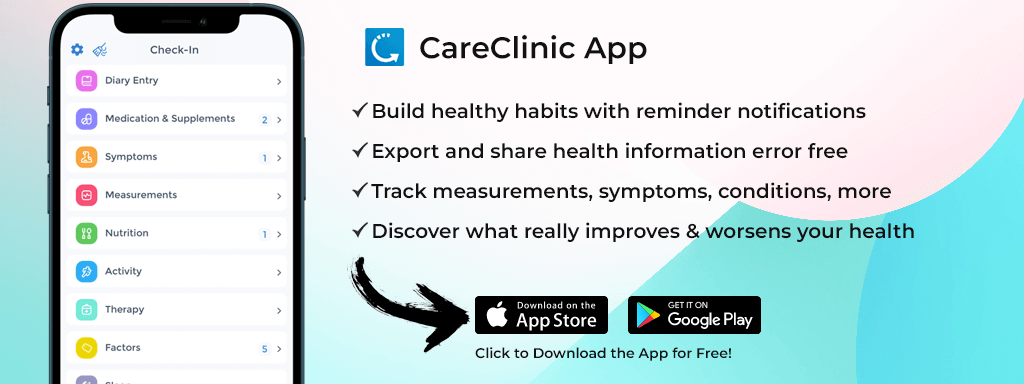
OCD compulsions feel impossible to control, but tracking patterns reveals triggers and helps reduce their intensity. Documenting when, where, and what triggers your compulsions gives you and your mental health provider the data needed to develop effective treatment strategies. The CareClinic App turns overwhelming OCD symptoms into clear data that helps you get better.
Understanding your compulsion patterns is crucial for OCD management. Research shows that detailed symptom tracking can reduce OCD symptoms by 40-60% when combined with proper treatment. The key lies in consistent documentation that reveals patterns your mind can't see in the moment. Since OCD often co-occurs with anxiety disorders, using the comprehensive tracking features that support both conditions provides a more complete picture of your mental health.
Table of Contents
- Why Document OCD Compulsion Patterns?
- How Do I Set Up OCD Compulsion Tracking in CareClinic?
- What Should I Track for Each Compulsion Episode?
- How Do I Use the Mood Tracker for OCD Management?
- What Factors Should I Track That Influence OCD Symptoms?
- How Do I Create Meaningful Reports for My Mental Health Provider?
- Can I Track OCD Compulsions for Family Members?
- What Patterns Should I Look for in My OCD Data?
- How Do I Track Treatment Progress and Recovery?
- What Should I Do When OCD Symptoms Worsen?
- How Can I Use CareClinic's Advanced Features for OCD Management?
- Clinical Quiz: Test Your OCD Tracking Knowledge
- Your 7-Day OCD Tracking Challenge
- Take Control of Your OCD Journey
Why Document OCD Compulsion Patterns?
Your brain during an OCD episode isn't objective. Anxiety clouds judgment, making compulsions feel necessary for survival. But documented patterns reveal the truth: compulsions rarely prevent the feared consequences. The CareClinic App creates distance between you and your OCD by showing objective data rather than subjective fear.
Healthcare providers need specific information to help you effectively. Saying "I wash my hands a lot" tells them less than "I wash my hands 47 times daily, averaging 3.2 minutes per wash, triggered by touching doorknobs, with severity peaking between 2-4 PM." This precision comes from consistent tracking.
Benefits of Daily OCD Tracking
- Pattern Recognition: Identify specific triggers, times, and situations that increase compulsive urges
- Progress Monitoring: See concrete evidence of improvement during treatment
- Treatment Optimization: Help therapists adjust exposure therapy and medication timing
- Trigger Avoidance: Understand environmental factors that worsen symptoms
- Family Education: Show loved ones how OCD affects your daily life
How Do I Set Up OCD Compulsion Tracking in CareClinic?
The CareClinic App has all the tools you need for mental health tracking. The symptom tracker lets you create custom symptoms for each type of compulsion you experience. Here's how to set up effective OCD tracking:
Step 1: Create Custom Compulsion Symptoms
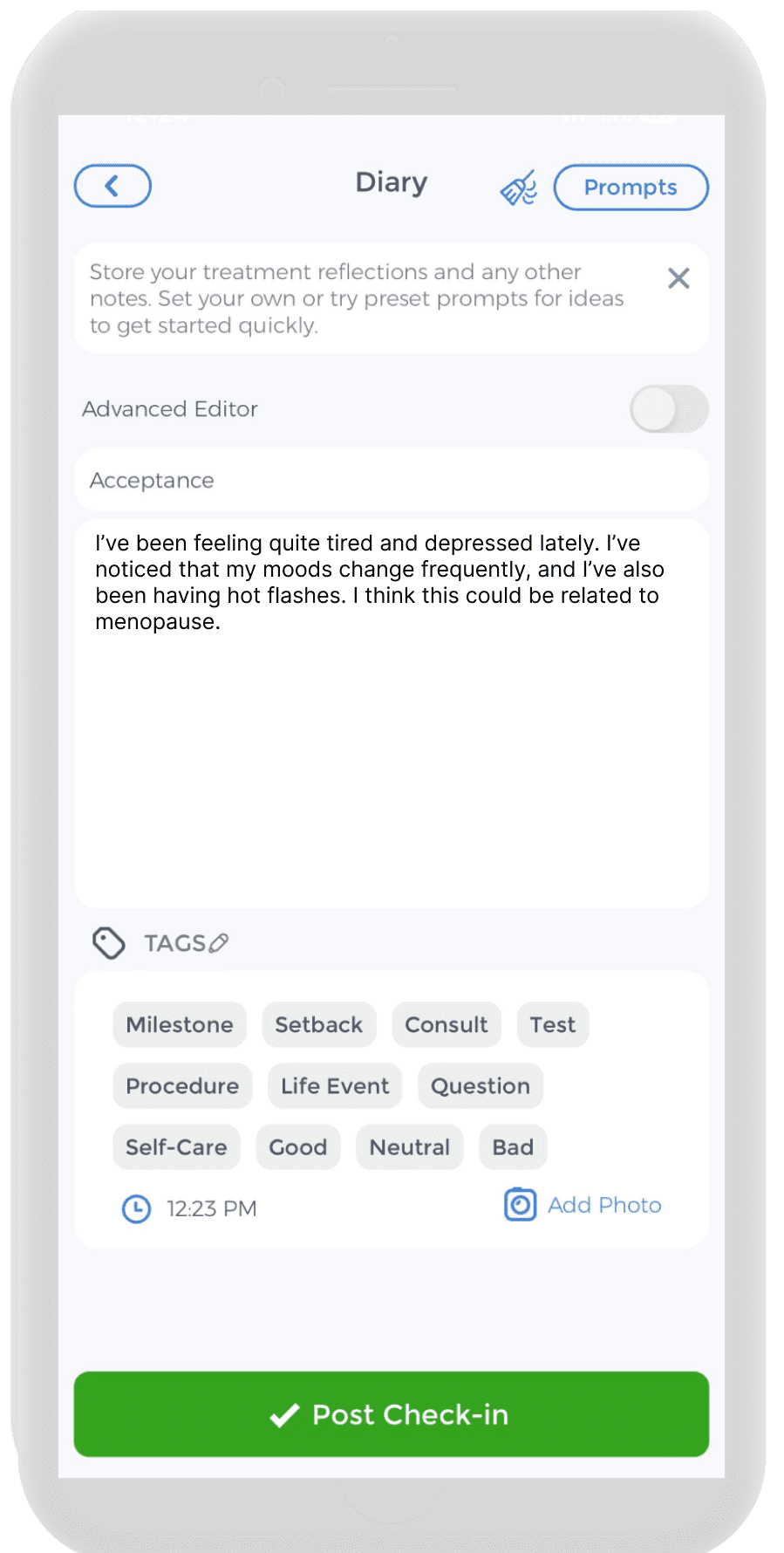
Navigate to the Symptom Tracker and tap "Add Custom Symptom." Create specific entries for each compulsion type:
- Hand Washing: Track frequency, duration, and intensity
- Checking Behaviors: Door locks, stoves, windows, etc.
- Counting Compulsions: Mental or physical counting rituals
- Arranging/Ordering: Objects must be in specific positions
- Touching/Tapping: Repetitive physical actions
- Mental Rituals: Prayers, phrases, or mental "undoing"
For each custom symptom, enable severity tracking using the 1-10 scale, where 1 means minimal urge and 10 represents overwhelming compulsion.
Step 2: Configure Timing and Frequency Options
Set up multiple daily entries for each compulsion type. OCD symptoms fluctuate throughout the day, so capturing this variation is crucial. Enable the "Multiple Entries" option to log compulsions as they occur rather than trying to remember everything at bedtime.
The CareClinic App allows backdating entries, so if you forget to log a compulsion episode, you can add it later with the correct timestamp. This feature ensures your data remains accurate and complete.
What Should I Track for Each Compulsion Episode?
Effective OCD tracking requires capturing multiple data points for each compulsion episode. The more detailed your records, the clearer the patterns become. Focus on these key elements:
Essential Data Points

- Time and Duration: When did the compulsion start and how long did it last?
- Severity Level: Rate the urge intensity from 1-10
- Trigger Event: What happened right before the compulsion?
- Location: Where were you when it occurred?
- Emotional State: Anxiety, stress, fatigue, or other feelings
- Resistance Level: Did you try to resist? How successful were you?
- Relief Duration: How long did performing the compulsion reduce anxiety?
Use the notes feature in CareClinic to add context. Write brief descriptions like "touched doorknob at grocery store" or "worried about leaving stove on" to capture the specific trigger situations.
Real-World Tracking Examples
Scenario 1: Morning Routine Disruption
At 7:23 AM, a contamination trigger was experienced when the bathroom doorknob was touched after hearing someone cough nearby. The compulsion urge was rated 8/10 in severity. Hand washing was performed for 4 minutes, 37 seconds. The relief duration was noted as 22 minutes before anxiety returned. A note was added: "Morning routine delayed by 15 minutes." The follow-up action taken was scheduling an exposure exercise with the therapist to practice touching doorknobs without immediate washing.
Scenario 2: Work Meeting Challenge
During a 2:15 PM video call, checking compulsions were triggered by uncertainty about muting the microphone. The severity was logged as 6/10. The laptop was checked 11 times over 3 minutes. Relief lasted only 8 minutes. The pattern was identified through CareClinic's correlation feature, showing afternoon meetings consistently triggered checking behaviors. The intervention implemented was setting a sticky note reminder about the microphone status for future calls.
Scenario 3: Evening Medication Timing
At 8:45 PM, symmetry compulsions were experienced while organizing medication bottles. Severity was rated 5/10. Fifteen minutes were spent arranging bottles in perfect alignment. The CareClinic medication tracker was used to note this delay affected the scheduled 9:00 PM dose. The data revealed evening fatigue increased symmetry compulsions by 40%. A simplified medication storage system was created as the corrective action.
Tracking Resistance and Exposure Exercises
If you're working with a therapist on exposure and response prevention (ERP), track your resistance attempts. Create a custom measurement for "Resistance Success" rated 1-10:
- 1-3: Gave in immediately to compulsion urge
- 4-6: Delayed the compulsion for some time
- 7-9: Resisted successfully but with high anxiety
- 10: Resisted compulsion completely without significant distress
This data helps you and your therapist see progress in building tolerance to OCD urges.
How Do I Use the Mood Tracker for OCD Management?
OCD and mood go hand in hand. The CareClinic App's mood tracker uses the medically accepted Visual Analog Scale (VAS) to help you rate emotional states accurately. Track your mood multiple times daily to see how it links to compulsion frequency.
Advanced Mood Tracking Features

The mood tracker includes specific feelings you can add to each entry. For OCD management, focus on tracking:
- Anxiety: General worry and nervousness
- Dread: Anticipatory fear about potential consequences
- Relief: Temporary comfort after completing compulsions
- Frustration: Anger at being controlled by OCD
- Shame: Embarrassment about compulsive behaviors
Add notes to your mood entries explaining the connection to OCD symptoms. These insights help identify emotional triggers that increase compulsive urges.
Using Correlation Analysis
CareClinic's correlation feature reveals connections between mood and compulsion frequency. Access this through the reporting section to compare mood entries with compulsion episodes. Look for patterns like "anxiety scores above 7 precede hand-washing episodes by 30 minutes" or "Monday mornings show consistently higher compulsion rates."
What Factors Should I Track That Influence OCD Symptoms?
OCD symptoms don't exist in isolation. Environmental factors, life events, and physical health all influence compulsion intensity. The CareClinic App's Factors tracker helps you document these connections step by step.
Environmental and Lifestyle Factors
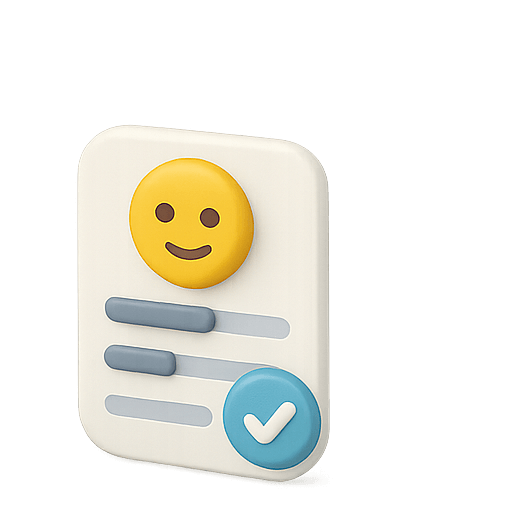
Create custom factors for elements that might influence your OCD:
- Sleep Quality: Poor sleep often worsens OCD symptoms the next day
- Caffeine Intake: Stimulants can increase anxiety and compulsive urges
- Social Situations: Certain people or environments may trigger symptoms
- Work Stress: Professional deadlines and pressure affect OCD severity
- Menstrual Cycle: Hormonal changes can influence symptom intensity
- Weather Changes: Some people notice seasonal patterns in OCD symptoms
Rate how much each factor affected you on a 1-10 scale, with 10 being maximum impact. Over time, you'll identify which factors most significantly influence your OCD symptoms.
Medication and Treatment Tracking
If you take OCD medications like SSRIs or participate in therapy, track these interventions alongside your symptoms. The CareClinic App's medication tracker helps you:
- Monitor Adherence: Ensure consistent medication timing
- Track Side Effects: Document any negative medication effects
- Correlate Effectiveness: See how medication timing relates to symptom improvement
- Prepare for Appointments: Generate reports for your psychiatrist
Include therapy sessions as activities in your tracker. Rate your anxiety level before and after sessions to measure therapeutic progress over time.
How Do I Create Meaningful Reports for My Mental Health Provider?
Healthcare providers need detailed data to improve your OCD treatment. The CareClinic App creates clear reports that show your tracking data in ways mental health professionals can easily understand and use for treatment planning.
Export Options for Medical Appointments
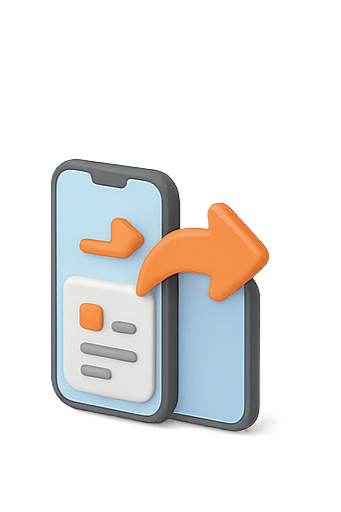
Generate reports that include:
- Symptom Frequency Trends: Charts showing compulsion episodes over time
- Severity Patterns: Visual representation of symptom intensity changes
- Trigger Analysis: Most common situations that precede compulsions
- Treatment Correlation: How medication timing affects symptom severity
- Progress Measurements: Quantified improvement in resistance and symptom frequency
Export formats include PDF reports for visual presentation and CSV files for detailed data analysis. All exports are HIPAA-compliant with secure encryption. The maximum export size is 50MB, covering up to 2 years of tracking data.
Schedule report generation the day before your appointment. This ensures your provider receives the most current data and can adjust treatment plans accordingly.
Preparing for Therapy Sessions
Print or email your CareClinic reports before therapy appointments. Include specific examples from your notes that illustrate challenging moments or breakthrough successes. This preparation helps you use therapy time more effectively by focusing on data-driven insights rather than trying to remember scattered experiences.
Your therapist can use this information to:
- Identify optimal exposure therapy targets
- Adjust homework assignments based on your specific triggers
- Track your progress objectively between sessions
- Modify treatment strategies that aren't working
Can I Track OCD Compulsions for Family Members?
The CareClinic App supports caregiving features that allow you to track symptoms for family members with OCD. This is particularly valuable for parents monitoring children with OCD or partners supporting loved ones through treatment.
Setting Up Dependent Profiles
Create separate accounts for dependent family members or add them as dependents to your existing account. This ensures proper data attribution while allowing collaborative tracking. Caregivers can sync data periodically to stay updated on symptom patterns and treatment progress.
For children with OCD, involve them in the tracking process when age-appropriate. Teaching kids to recognize and document their compulsions helps develop self-awareness and treatment engagement. The visual charts in CareClinic can help children understand their patterns in concrete terms.
Family Communication and Support
Share appropriate tracking insights with family members to help them understand OCD patterns. When relatives see data showing that certain comments or situations increase compulsions, they can adjust their behavior to provide better support.
Use the app's timeline feature to show family members how OCD symptoms fluctuate naturally. This helps reduce blame and guilt while encouraging patience during difficult periods.
What Patterns Should I Look for in My OCD Data?
After collecting several weeks of data, specific patterns will emerge that guide treatment decisions. The CareClinic App's analysis tools help identify these trends automatically, but understanding what to look for gives you deeper insight into your OCD patterns.
Time-Based Patterns
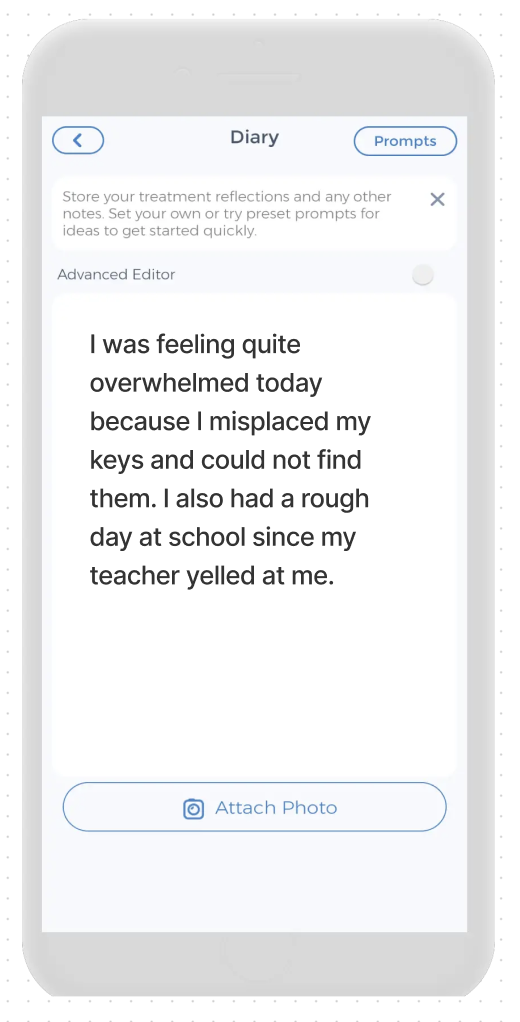
Look for these temporal patterns in your data:
- Daily Cycles: Do compulsions peak at certain times of day?
- Weekly Patterns: Are weekends or specific weekdays more challenging?
- Monthly Trends: Do symptoms correlate with menstrual cycles or monthly stressors?
- Seasonal Changes: Do certain times of year worsen OCD symptoms?
Understanding your personal rhythm helps predict difficult periods and prepare coping strategies in advance.
Trigger Identification
Review your tracking notes to identify the most common triggers. Group similar triggers together to see broader patterns. For example, you might notice that all cleaning compulsions stem from contamination fears, while checking behaviors relate to responsibility concerns.
Common trigger categories include:
- Contamination concerns (dirt, germs, chemicals)
- Harm fears (accidents, violence, injury)
- Responsibility anxiety (leaving doors unlocked, making mistakes)
- Symmetry and order needs (things must be "just right")
- Religious or moral concerns (blasphemous thoughts, moral purity)
How Do I Track Treatment Progress and Recovery?
Recovery from OCD is rarely linear. Good days alternate with challenging ones, making progress difficult to see without objective data. The CareClinic App's trend analysis reveals overall improvement patterns that motivate continued treatment engagement.
Setting Realistic Progress Markers
Define specific, measurable goals for your OCD recovery:
- Frequency Reduction: Decrease hand-washing from 20 to 10 times daily
- Duration Limits: Reduce checking rituals from 30 to 15 minutes
- Resistance Improvement: Increase resistance success scores from 3 to 6
- Anxiety Tolerance: Maintain daily functioning despite moderate OCD urges
Track these metrics consistently to see genuine progress even during difficult periods.
Celebrating Small Wins
Use CareClinic's achievement tracking to acknowledge recovery milestones. Set up custom achievements for completing exposure exercises, resisting compulsions for specific periods, or maintaining consistent tracking habits.
Recovery celebrations might include:
- First day without performing a specific compulsion
- Completing a challenging exposure exercise
- One week of consistent symptom tracking
- Reducing overall compulsion time by 25%
These positive reinforcements maintain motivation during the challenging recovery process.
What Should I Do When OCD Symptoms Worsen?
OCD symptoms naturally fluctuate, and temporary increases don't mean treatment failure. The CareClinic App helps you respond appropriately to symptom changes by providing context and guidance during difficult periods.
When you notice increased compulsions, check your tracking data for potential explanations:
- Medication Changes: Did you miss doses or change timing?
- Life Stressors: Have new pressures increased your baseline anxiety?
- Sleep Disruption: Has poor sleep quality affected your symptom management?
- Seasonal Factors: Do you historically struggle during this time of year?
Emergency Support Planning
Create a crisis plan within the CareClinic App that includes:
- Emergency contact numbers for your therapist and psychiatrist
- Coping strategies that have worked during previous difficult periods
- Medication information for emergency room visits
- Trusted friends or family members who understand your OCD
Having this information readily accessible reduces panic during symptom flares and ensures you get appropriate help quickly.
How Can I Use CareClinic's Advanced Features for OCD Management?
Beyond basic symptom tracking, the CareClinic App offers advanced features designed specifically for complex mental health conditions like OCD. These tools provide deeper insights and better treatment support.
Care Plan Integration
Create a complete OCD care plan that includes:
- Medication Schedules: Set reminders for SSRIs and anxiety medications
- Therapy Appointments: Track session frequency and homework completion
- Exposure Exercises: Log planned ERP practice sessions
- Self-Care Activities: Include meditation, exercise, and relaxation practices
The care plan view shows everything about your OCD management in one place, helping you stay consistent with all treatment elements at the same time.
Multi-Device Synchronization
Install CareClinic on all your devices to ensure consistent tracking regardless of location. Sync data automatically across phones, tablets, and computers so you never miss documenting an important compulsion episode or mood change.
This feature is particularly valuable for OCD tracking since compulsions can occur unexpectedly throughout the day. Having immediate access to your tracking tools increases compliance and data accuracy.
Clinical Quiz: Test Your OCD Tracking Knowledge
Question 1: How often should you log OCD compulsions in the CareClinic App?
A) Once daily at bedtime
B) Only during severe episodes
C) As they occur throughout the day
D) Weekly during therapy appointments
Question 2: What is the most important data point to track for each compulsion episode?
A) Location where it occurred
B) Severity level and duration
C) Other people present
D) Weather conditions
Question 3: Which CareClinic feature helps identify connections between mood and compulsions?
A) Medication tracker
B) Care plan view
C) Correlation analysis
D) Export function
Answers: 1-C, 2-B, 3-C
Your 7-Day OCD Tracking Challenge
Day 1-2: Set up custom compulsion symptoms in CareClinic
Day 3-4: Add mood and anxiety tracking to each entry
Day 5-6: Include environmental factors and triggers
Day 7: Generate your first weekly report and identify patterns
Success Criteria:
- Track at least 3 different compulsion types
- Log mood ratings twice daily
- Document specific triggers for 80% of episodes
- Complete all 7 days without missing more than 2 entries
Reward: Share your completed challenge data with your therapist and celebrate taking control of your OCD management!
Take Control of Your OCD Journey
OCD feels overwhelming because it operates in darkness, feeding on uncertainty and fear. Documenting compulsion patterns with the CareClinic App brings these behaviors into the light where they lose their power over you. Every entry you make is an act of rebellion against OCD's control.
Your tracking data becomes the foundation for effective treatment. Therapists can design better exposure exercises when they understand your specific triggers. Psychiatrists can adjust medication timing based on your symptom patterns. Family members can provide more targeted support when they see your actual challenges rather than guessing.
The path to OCD recovery requires courage, consistency, and the right tools. CareClinic gives you a simple way to track symptoms and spot patterns that help you take back control. Start your mental health tracking journey today and see how tracking data speeds up your recovery.
Remember: OCD is treatable, recovery is possible, and you don't have to navigate this journey alone. Download the CareClinic App and begin documenting your compulsion patterns. Your future self will thank you for taking this crucial first step toward freedom from OCD's control.

